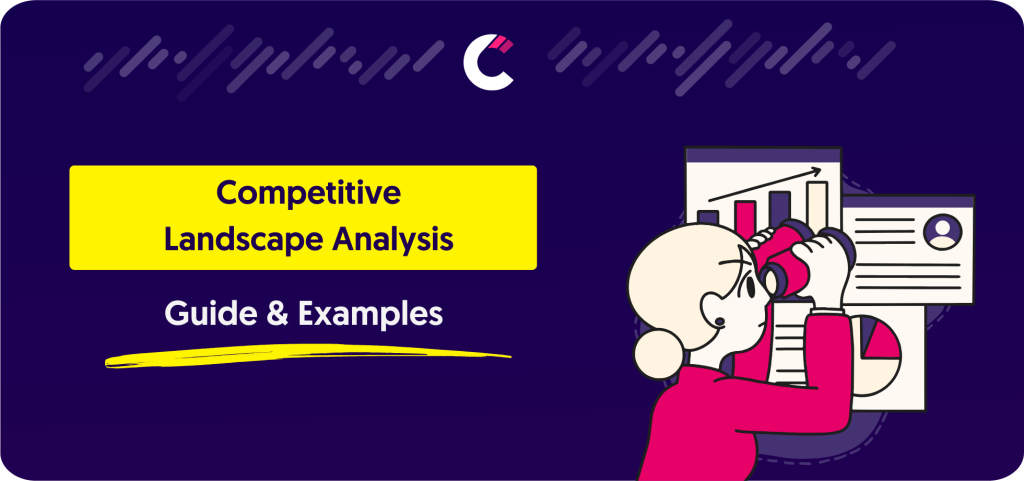
Ever wondered how to win against your competitors? This is where competitive landscape analysis comes into play, a crucial tool for businesses aiming to understand their market position and outperform their rivals. But what is a competitive landscape analysis, and why is it so important? Essentially, it’s a strategy that involves evaluating the dynamics of your industry and the strategies employed by your competitors. This process helps businesses gain a comprehensive overview of the market, understand emerging trends, and identify both opportunities and threats. Whether you’re a small startup or a well-established corporation, mastering competitive landscape analysis is key to making informed decisions and carving out a unique space in your industry. Let’s delve into this concept, unravel its components, and explore how you can effectively apply it to your business strategy.
At its core, competitive landscape analysis is a deep dive into understanding your market and the players within it. It’s about asking, “What is landscape analysis?” and then going beyond just a definition. This analysis involves scrutinizing various aspects of your industry, such as the strategies and performance of your competitors, market trends, customer preferences, and emerging technologies. Think of it as a map that shows where your competitors are positioned, their strengths and weaknesses, and where there are gaps or opportunities in the market. By conducting a thorough competitive landscape analysis, businesses gain valuable insights into what makes their competitors successful and how to adapt or outperform these strategies. Whether it’s identifying a unique selling proposition or anticipating market shifts, this analysis is a foundational tool for strategic decision-making in any business environment.
Understanding the importance of competitive landscape analysis is crucial for any business looking to thrive in its market. This process isn’t just about keeping an eye on your competitors; it’s about gaining a comprehensive understanding of the entire playing field. Here’s why it’s so significant:
Informed Decision-Making: Knowledge is power in business. By understanding the market dynamics and where your competitors stand, you can make more informed decisions. This can range from product development to marketing strategies.
Strategic Planning: Competitive landscape analysis helps you see the bigger picture. It’s not just about reacting to what your competitors are doing but proactively planning for future trends and changes in the market.
Risk Mitigation: In business, risks are unavoidable, but they can be managed. Knowing the landscape helps you foresee potential threats and devise strategies to mitigate them before they impact your business.
In essence, competitive landscape analysis is not just a tool but a lens through which businesses can view their market more clearly, identify opportunities, and avoid potential pitfalls. It’s about staying one step ahead in a constantly evolving marketplace.

Delving into competitive landscape analysis involves exploring several critical components that collectively provide a detailed picture of your market and competition. These components are essential for a thorough understanding and effective strategic planning:
Industry Overview: This is your starting point. Understanding the broader industry context, including its size, growth trends, and key players, sets the stage for more detailed analysis.
Competitor Analysis: Here, you focus on your direct and indirect competitors. What are their strengths and weaknesses? What strategies are they employing? How do they position themselves in the market? This component helps you understand who you’re up against and what they’re doing right or wrong.
Market Trends and Dynamics: Markets are always in flux, influenced by various external factors like technological advancements, regulatory changes, and shifting consumer preferences. Keeping tabs on these trends and dynamics ensures that you’re not just reacting to changes but anticipating them.
Customer Analysis: Understanding your target audience is crucial. Analyze customer needs, preferences, and behaviors to tailor your offerings and marketing strategies effectively.
Product and Service Comparison: Evaluate how your products or services stack up against those of your competitors. Look for areas of improvement, innovation, or unique selling propositions.
Regulatory Environment: In many industries, regulatory changes can significantly impact the competitive landscape. Keeping abreast of these changes helps in risk mitigation and finding new opportunities.
Each of these components plays a vital role in painting a complete picture of the competitive landscape. By examining them closely, you can identify gaps in the market, areas for improvement, and strategies that could give your business a competitive edge. Remember, competitive landscape analysis is not a one-time task but an ongoing process, vital for adapting to and thriving in a dynamic market environment.
To effectively dissect the competitive landscape, various analytical frameworks can be employed. Each offers unique insights and perspectives, making them invaluable tools for businesses seeking to understand their market position and strategize accordingly. Here are some key frameworks to consider:

This classic framework helps businesses identify internal Strengths and Weaknesses, and external Opportunities and Threats. It's a straightforward yet powerful tool for understanding where your business stands in relation to the competition. Read more in our article dedicated to SWOT Analysis.
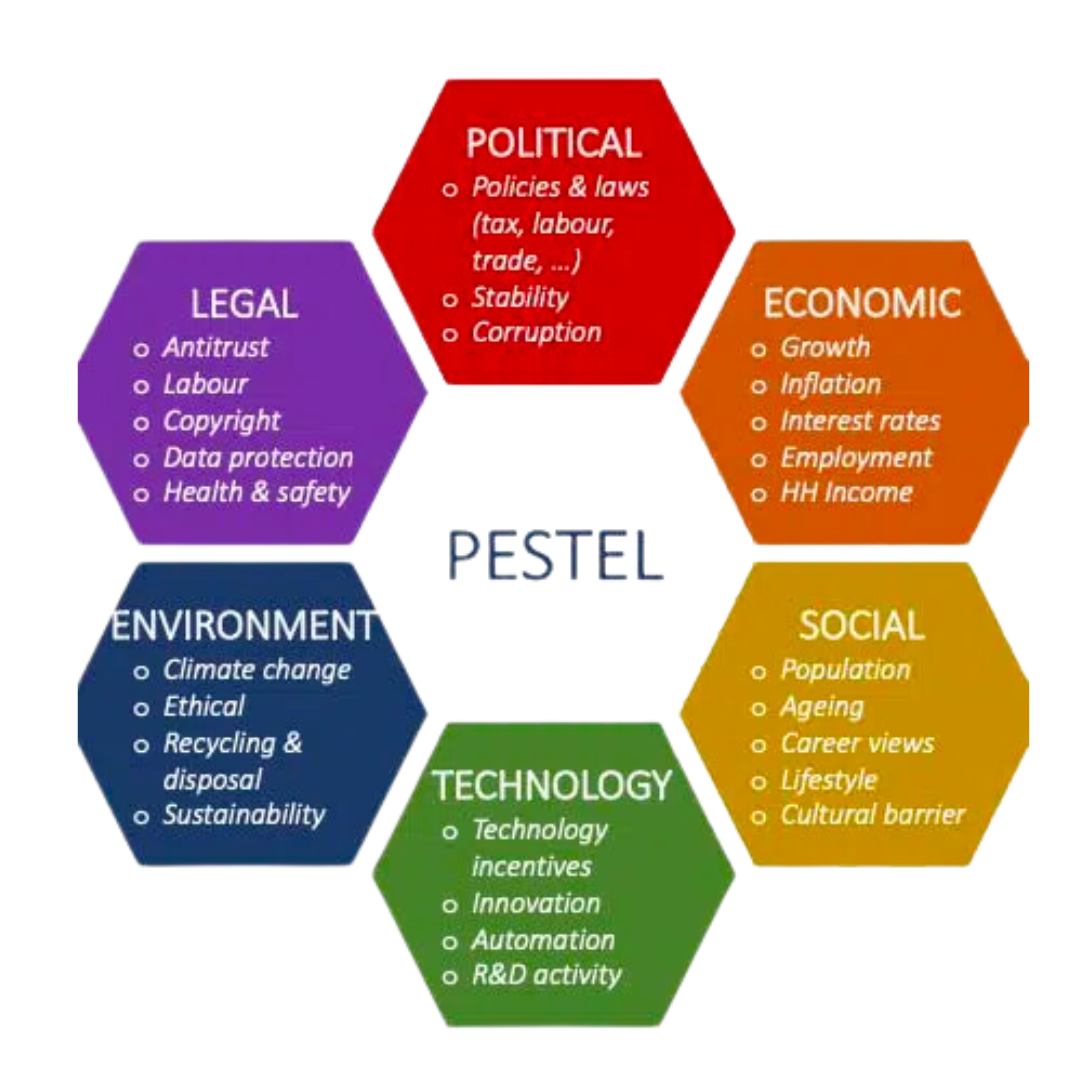
This framework examines the macro-environmental factors affecting an industry. It stands for Political, Economic, Social, Technological, Environmental, and Legal factors, providing a comprehensive view of the external factors influencing your market.
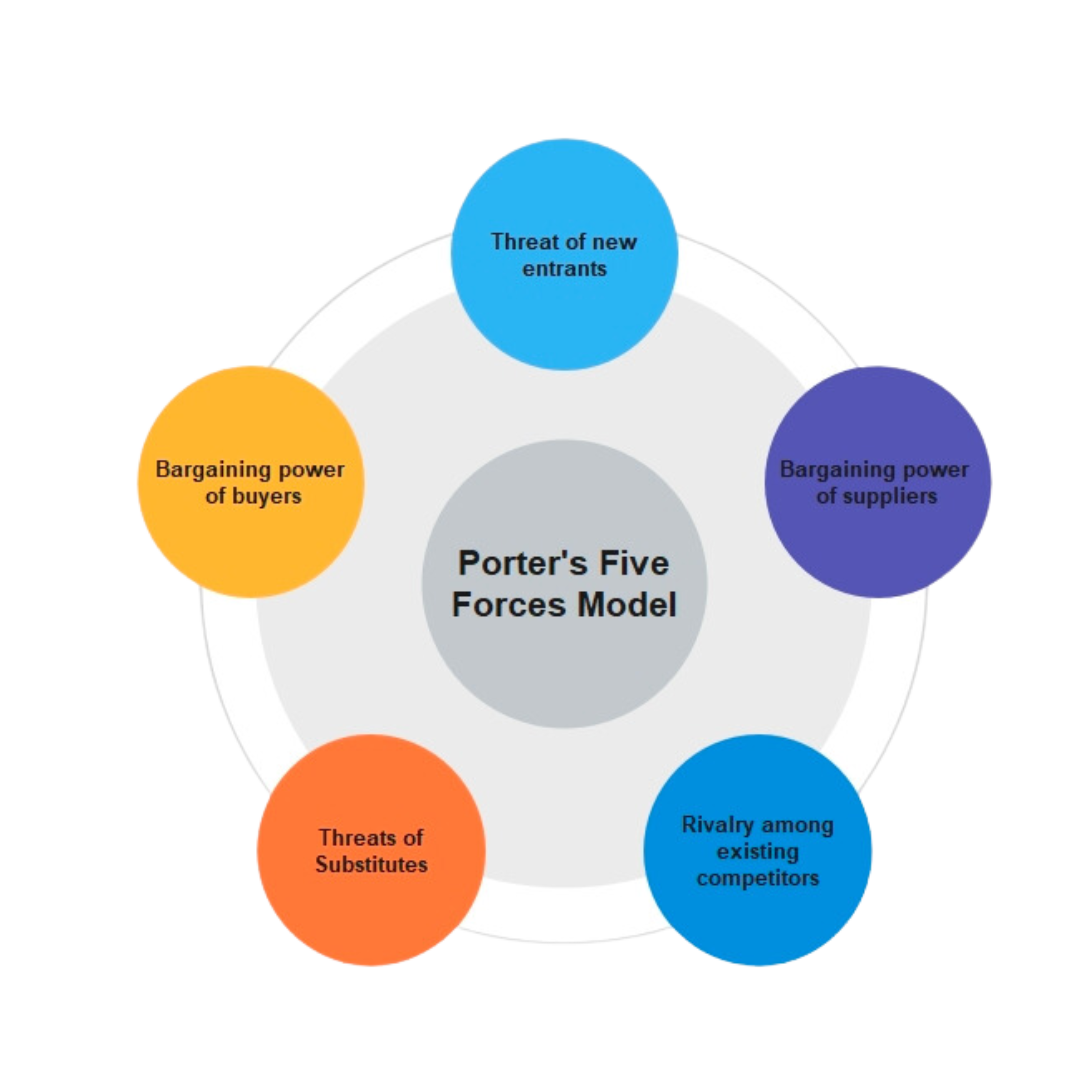
Developed by Michael E. Porter, this model analyzes five key industry forces: competitive rivalry, threat of new entrants, threat of substitutes, bargaining power of suppliers, and bargaining power of customers. It's particularly useful for understanding the competitive intensity and attractiveness of a market.
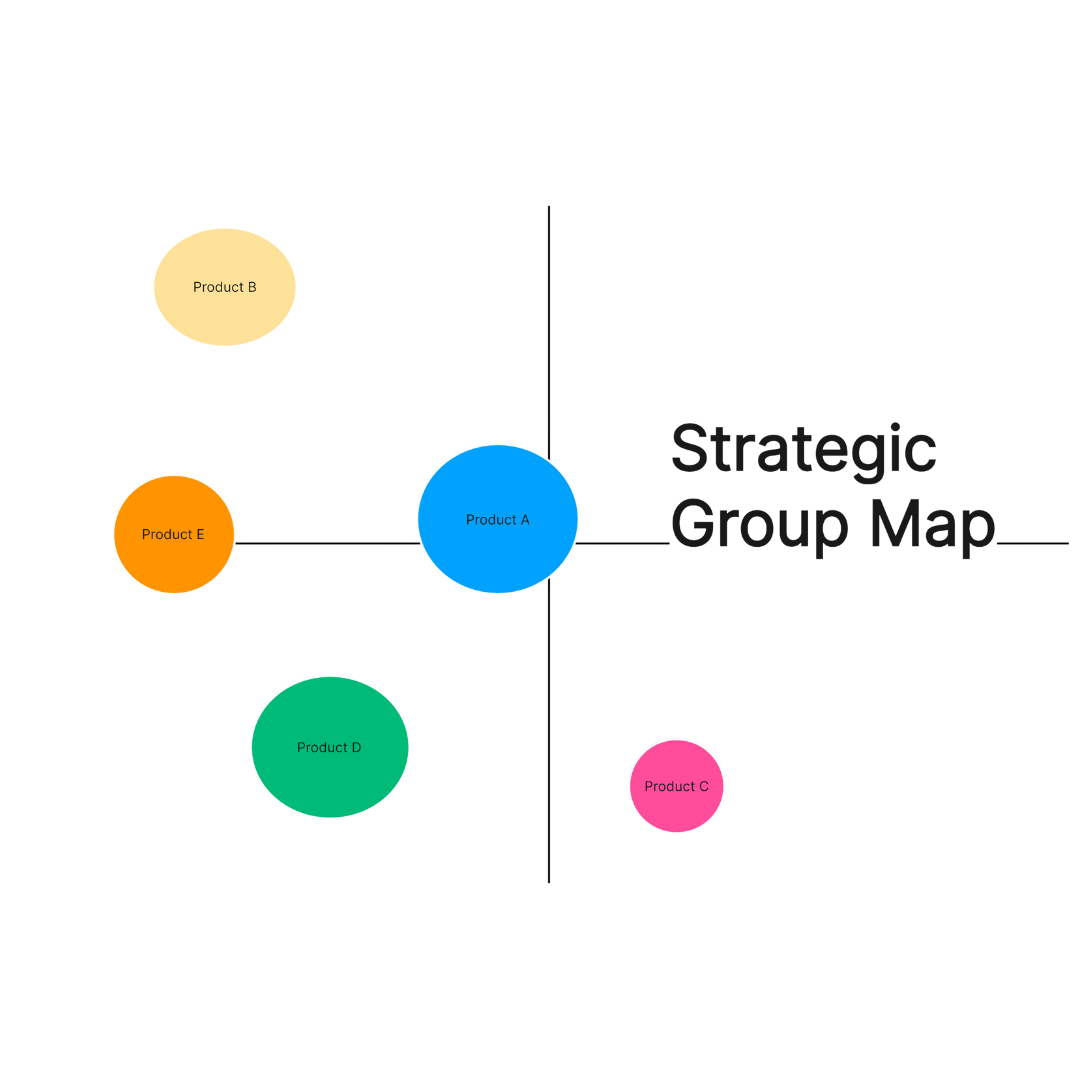
This involves grouping competitors based on similar business models or strategies. It helps in identifying direct competitors and understanding the different strategic approaches within the same industry.
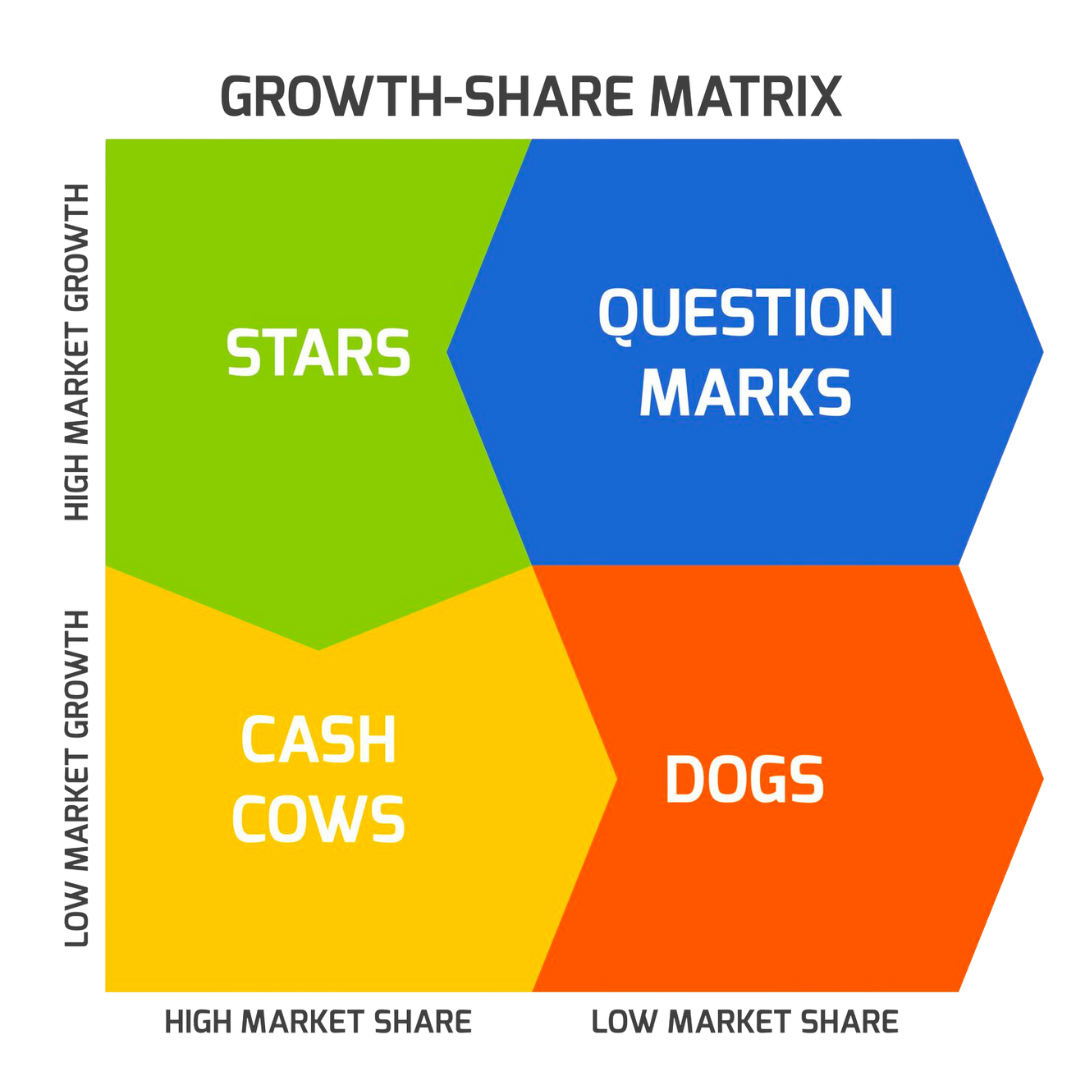
The Boston Consulting Group’s matrix categorizes business units or products into four categories (Stars, Cash Cows, Question Marks, Dogs) based on market growth and market share. This helps in prioritizing investments and strategies.
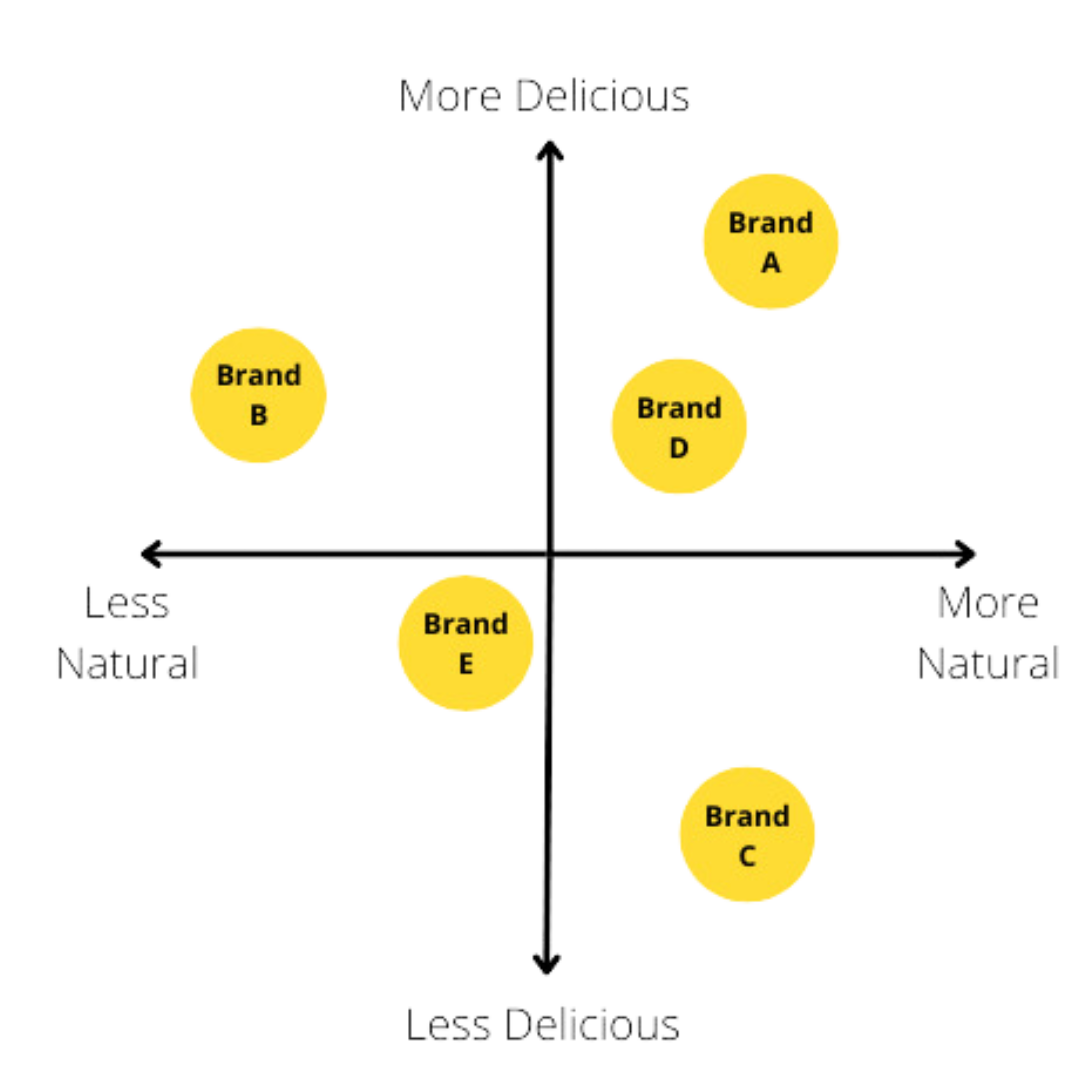
This visual tool maps out consumer perceptions of different brands or products in the market. It’s useful for identifying positioning gaps and opportunities for differentiation.
Employing these frameworks gives businesses a structured approach to analyzing their competitive environment. They help in uncovering insights that might not be apparent through a general market analysis, thereby aiding in strategic decision-making and planning.
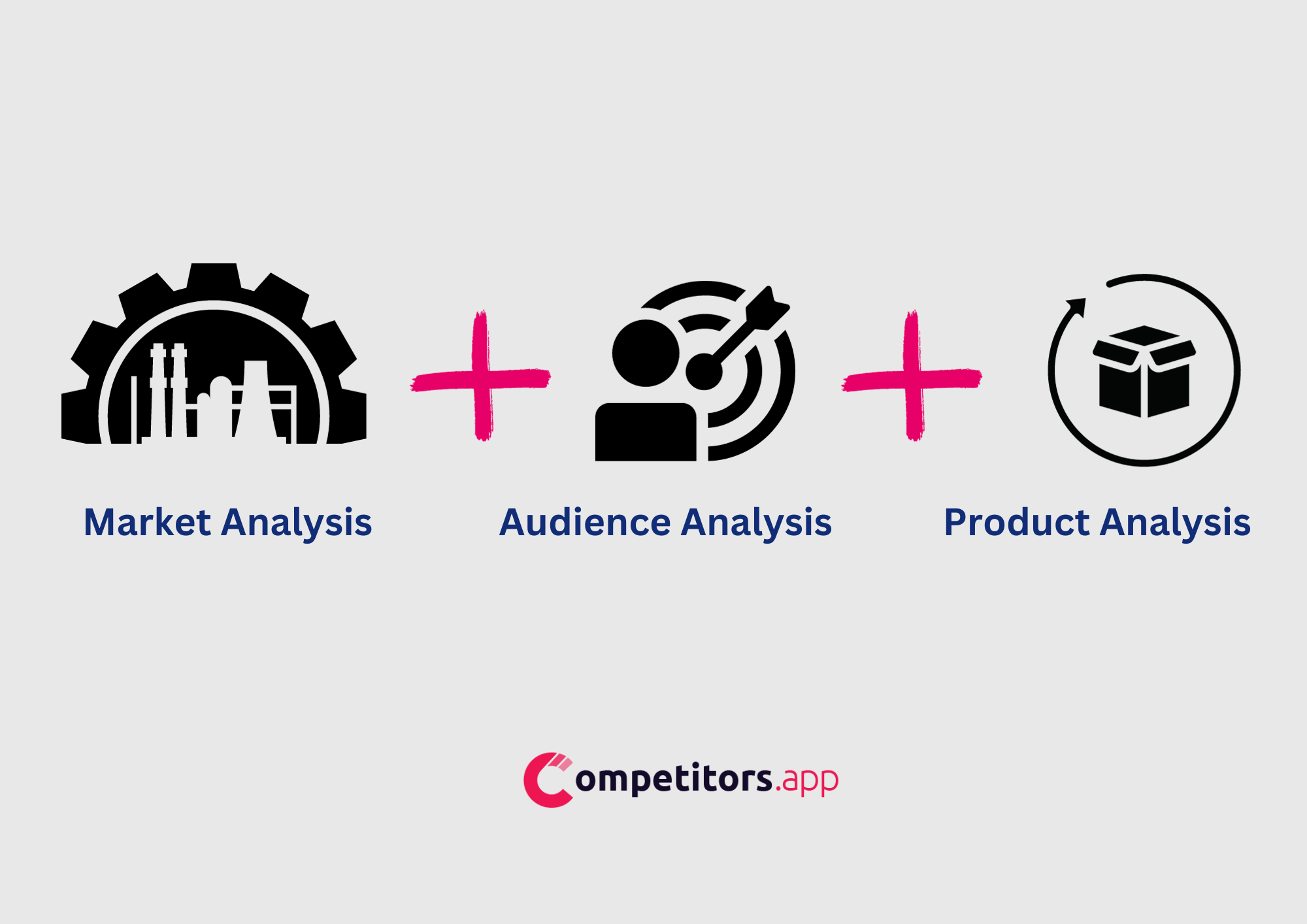
Gathering data is a critical step in conducting a comprehensive competitive landscape analysis. The accuracy and relevance of your data directly influence the quality of your insights. Here’s how you can collect data across different aspects of your competitive landscape:
Overall Market Landscape Analysis Data: Start with a broad view of the industry. Use market research reports, industry publications, and economic data to understand market size, growth trends, and key industry drivers.
Audience Landscape Analysis Data: Understanding your target audience is crucial. Gather data on customer demographics, preferences, and behaviors through surveys, social media analytics, and customer feedback.
Product Landscape Analysis Data: Analyze your competitors’ products or services. Look into their features, pricing, quality, and customer reviews. Tools like price tracking software and review aggregators can be handy here.
When collecting data, it’s important to use a mix of primary and secondary sources. Primary data comes directly from the source (like customer surveys), while secondary data is collected from existing sources (like industry reports). Also, leverage digital tools and platforms that can provide real-time data and analytics. Remember, the goal is to gather as much relevant and up-to-date information as possible to make your analysis comprehensive and actionable.
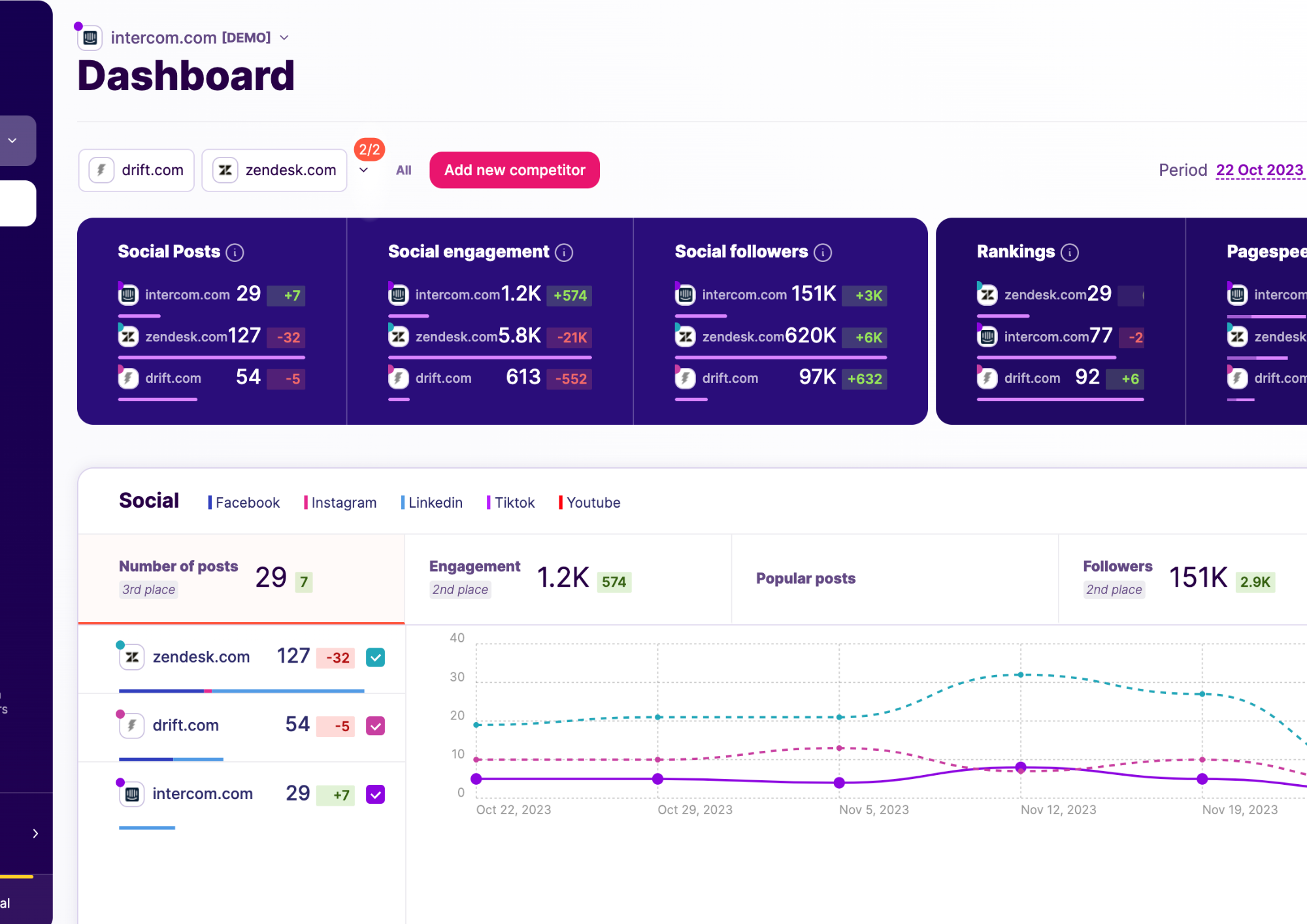
Competitors App is a specialized tool designed to streamline the process of tracking and analyzing your competitive landscape. Here’s how each feature of Competitors App can help you collect valuable insights:
Competitor Monitoring: This feature keeps track of your competitors’ online activities. From changes on their websites to updates in their social media posts, you can get a real-time view of their moves. Insight: Stay updated with your competitors’ strategies and tactics, allowing for quick responses or strategic adjustments.
Social Media Analysis: The app provides detailed analytics on competitors’ social media performance. This includes engagement rates, content strategy, and audience growth. Insight: Understand what type of content resonates with your shared audience and identify gaps in your own social media strategy.
SEO Tracking: By monitoring competitors’ search engine performance, including keywords and rankings, you can refine your own SEO strategies. Insight: Discover high-performing keywords and content strategies that drive organic traffic for your competitors.
Email Newsletter Insights: Keep tabs on competitors’ email marketing campaigns. This feature allows you to see the frequency, content, and style of their newsletters. Insight: Gain ideas for your own email marketing campaigns and understand how competitors engage with their audience.
Review and Feedback Analysis: Analyzing customer reviews and feedback on competitors’ products or services can provide a goldmine of information. Insight: Identify what customers like or dislike about your competitors’ offerings, helping you to improve your own products or services.
Market News and Alerts: Stay informed about any industry news or updates that might affect your market position. Insight: Quickly adapt to market changes and opportunities by being one of the first to know about significant developments.
By utilizing these features of Competitors App, you can systematically gather and analyze data, providing a wealth of insights for your competitive landscape analysis. This data-driven approach ensures that your strategies are informed, relevant, and timely, keeping you a step ahead in the competitive game.
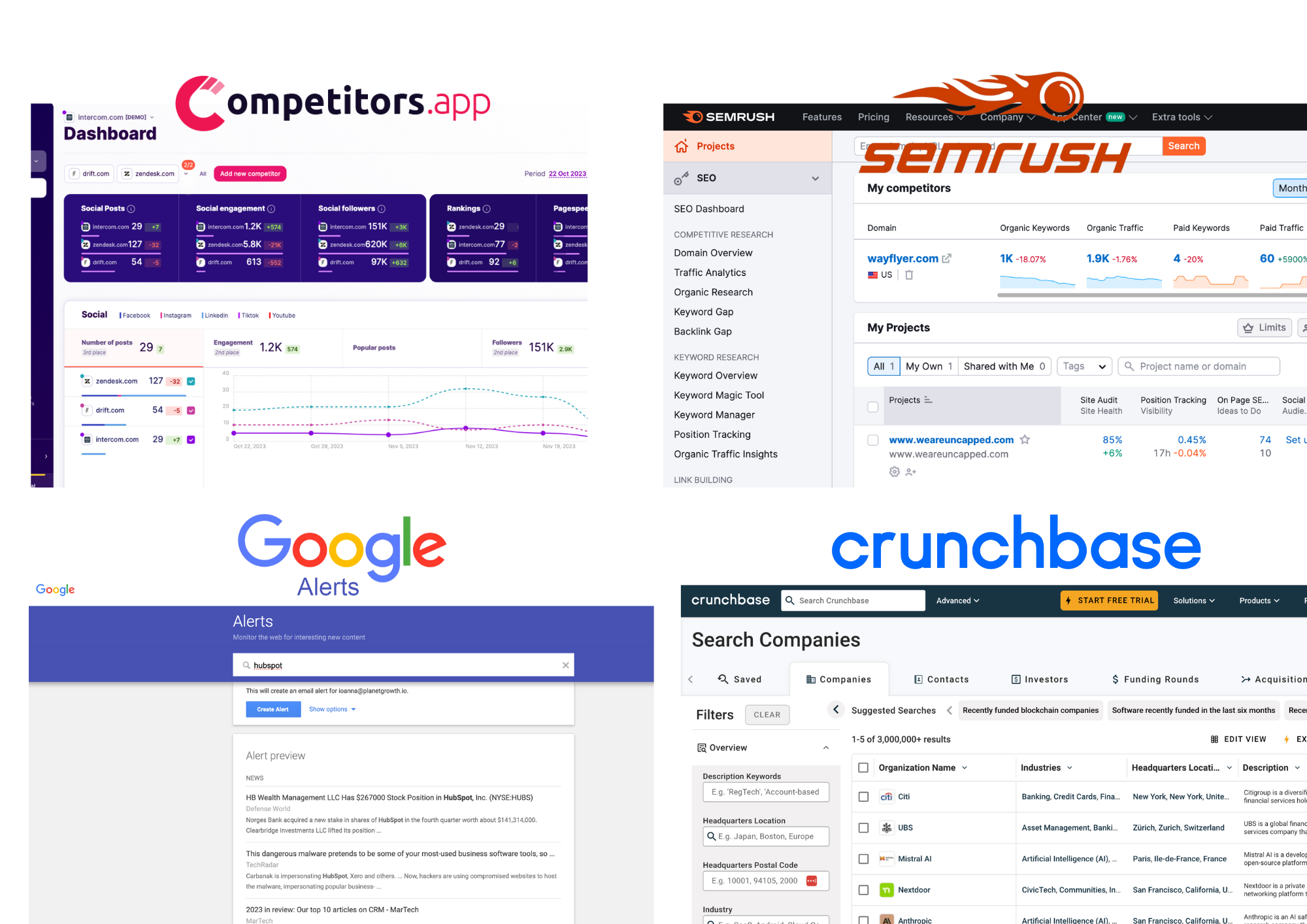
Competitive landscape analysis requires the right tools to efficiently gather and interpret data. Here are five essential tools that can help streamline your analysis process:
Competitors App: An all-in-one tool for tracking competitors’ online activities, social media, SEO, email newsletters, and customer feedback. It provides real-time insights into competitors’ strategies, helping you stay informed and responsive.
SEMrush: A comprehensive digital marketing tool that offers features like keyword research, site audits, and competitor SEO analysis. It’s particularly useful for understanding how your competitors are performing in search engines and identifying opportunities for your own SEO strategy.
Google Alerts: This free tool from Google notifies you when a new content appears on the web about your competitors or industry. It’s a simple way to keep tabs on the latest news and updates relevant to your market.
Crunchbase: Great for understanding the financial side of your competitors, including funding rounds, acquisitions, and key financial metrics. This information can provide insights into competitors’ growth strategies and financial health.
These tools bring unique capabilities to your competitive landscape analysis, from tracking competitor strategies to understanding complex market trends. By leveraging a combination of these tools, you can gain a comprehensive and nuanced understanding of your competitive environment.
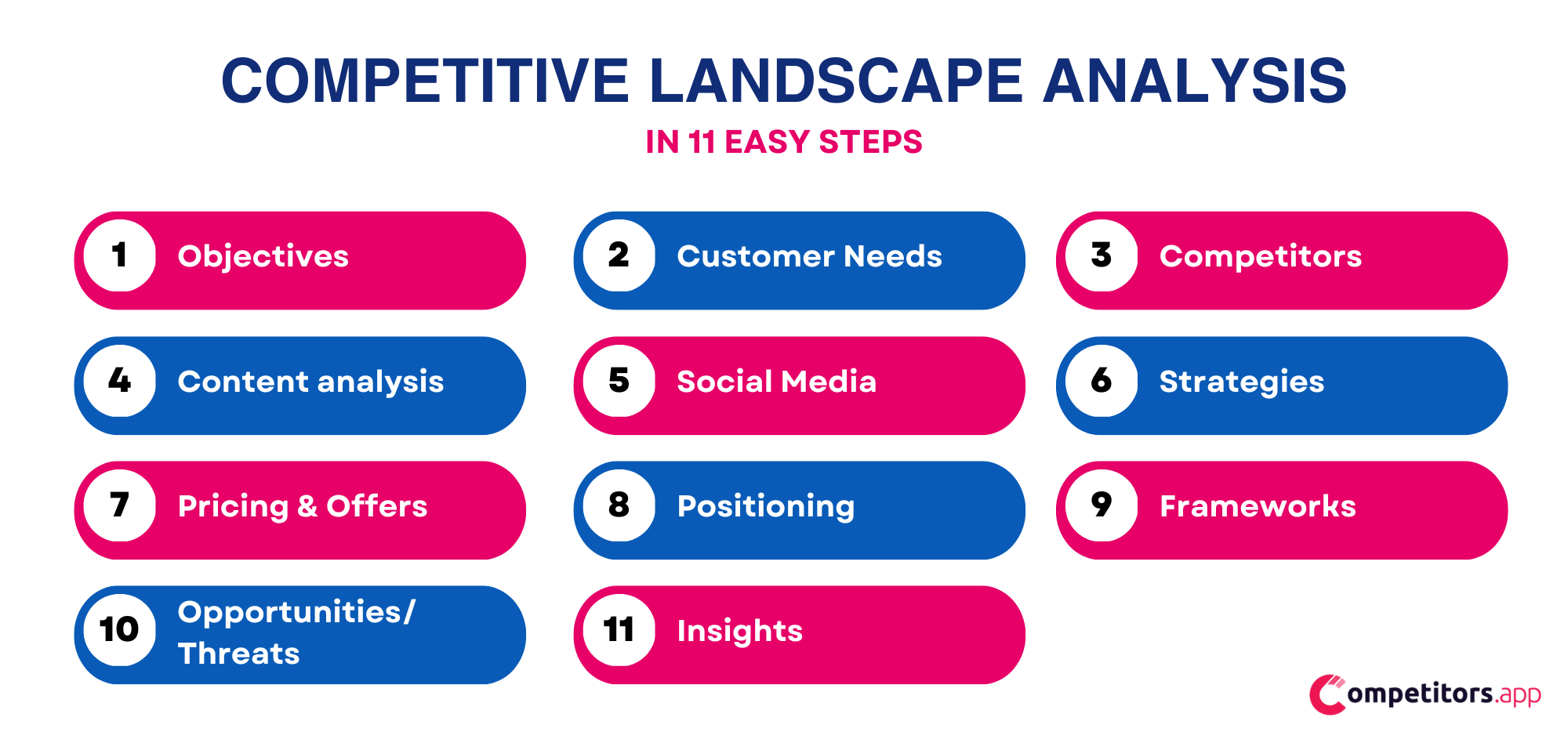
Conducting a competitive landscape analysis can seem daunting, but breaking it down into manageable steps makes the process more approachable. Here’s a step-by-step guide to help you effectively analyze your competitive environment:
Define Your Objectives: Start by clearly defining what you want to achieve with your analysis. Are you looking to enter a new market, launch a new product, or simply stay ahead of the competition?
Explore Customer Needs: Understand your customers’ needs, preferences, and pain points. Use surveys, social media listening, and market research to gather this information.
Identify Your Competitors: Make a list of both direct and indirect competitors. Don’t overlook smaller players who might be emerging disruptors in your industry.
Analyze Competitor Content: Examine your competitors’ websites, blogs, and marketing materials. Note their key messages, content strategy, and engagement tactics.
Monitor Competitors’ Social Media: Observe their social media presence. What kind of content are they posting? How are they engaging with their audience?
Review Their Marketing Strategies: Look into their advertising, promotions, and other marketing campaigns. What channels are they using, and how effective do they appear to be?
Evaluate Competitors’ Pricing and Offers: Compare their pricing models, discounts, and special offers. This will give you insights into their pricing strategies and customer value propositions.
Determine Their Positioning: Understand how each competitor is positioned in the market. What makes them unique? What is their unique selling proposition?
Use Competitive Analysis Frameworks: Apply frameworks like SWOT, PESTEL, or Porter’s Five Forces to analyze your findings systematically.
Identify Opportunities and Threats: Based on your analysis, pinpoint potential opportunities for your business and threats you need to be aware of.
Extract Valuable Insights: Finally, synthesize all the data and insights to inform your business strategy.
By following these steps, you can conduct a thorough competitive landscape analysis, providing valuable insights to inform and guide your business strategy. Remember, this is an ongoing process and should be revisited regularly to stay ahead of market trends and changes.
Once you’ve conducted your competitive landscape analysis, the next crucial step is leveraging the insights you’ve gained. Here are three tips to help you effectively exploit these insights for your business advantage:
Actionable Strategy Development: Use the insights to develop or refine your business strategies. For example, if you’ve identified a gap in your competitors’ product offerings or marketing strategies, consider how you can fill that gap to gain a competitive edge. Similarly, if your analysis reveals a strong area of your competitor, think about ways you can adapt or improve upon their approach.
Targeted Marketing Efforts: Tailor your marketing efforts based on what you’ve learned about your competitors and your target audience. If you’ve identified certain channels where your competitors are underperforming or not present, consider capitalizing on these channels. Similarly, use insights about customer preferences and behaviors to craft more effective, targeted marketing messages.
Continuous Monitoring and Adaptation: The market and competitive landscapes are always evolving. Use your initial analysis as a baseline, but continue to monitor changes in the market and among your competitors. Be prepared to adapt your strategies accordingly to maintain or enhance your competitive position.
Exploiting insights from your competitive landscape analysis is all about turning information into action. It’s not just what you know, but how you use that knowledge to make better decisions and strategically position your business for success.
While competitive landscape analysis is a powerful tool, it’s essential to be aware of common pitfalls that can undermine its effectiveness. Here are some mistakes to avoid:
Overlooking Smaller Competitors: It’s easy to focus solely on the big players, but small or new entrants can be just as disruptive. They often bring innovative approaches that can quickly change the market dynamics.
Relying on Outdated Data: The market is constantly evolving, and so are your competitors. Using outdated information can lead to misguided strategies. Ensure your data is current and regularly updated.
Ignoring Customer Feedback: Customer opinions and feedback can provide invaluable insights into your competitors’ strengths and weaknesses. Neglecting this information can result in a one-sided analysis.
Failing to Look Beyond Direct Competitors: Sometimes, the biggest threat doesn’t come from direct competitors but from adjacent markets or substitute products. Broaden your analysis to include these potential threats.
Overemphasis on Competitors, Underemphasis on Customers: While understanding your competitors is crucial, your analysis should always circle back to your customers and their needs. Keep them at the center of your competitive strategy.
Not Turning Analysis into Action: Collecting and analyzing data is only half the battle. The real value comes from using these insights to inform strategic decisions and actions.
By avoiding these common mistakes, you can ensure that your competitive landscape analysis is more accurate, relevant, and actionable, leading to smarter, more informed business strategies.

Effectively presenting your competitive landscape analysis is crucial for ensuring that the insights you’ve gathered are understood and actionable. Here’s a guide to presenting your findings in a way that is clear, engaging, and impactful:
Start with a Summary: Begin your presentation with an executive summary that highlights the key findings and conclusions. This gives your audience a clear overview of what to expect.
Use Visual Aids: Leverage charts, graphs, and infographics to make your data more digestible and engaging. Tools like SWOT matrices, competitor comparison tables, and trend graphs can be particularly effective.
Segment Your Analysis: Break down your findings into clear sections – industry overview, competitor profiles, market trends, etc. This structured approach makes it easier for your audience to follow along.
Highlight Key Insights: Don’t just present data; emphasize the most crucial insights. What are the biggest opportunities and threats? What strategies do you recommend based on your analysis?
Tailor the Presentation to Your Audience: The level of detail and focus areas should be adjusted based on who you’re presenting to. Executives might prefer high-level insights, while teams responsible for strategy implementation may need more detailed information.
Include Case Studies or Examples: Real-world examples or case studies of how competitors have succeeded or failed can make your analysis more relatable and compelling.
End with Actionable Recommendations: Conclude with clear, actionable recommendations based on your analysis. This can include strategies to exploit opportunities, mitigate risks, or respond to competitive threats.
Invite Feedback and Discussion: Encourage questions and discussions at the end of your presentation. This can provide additional insights and help ensure everyone is aligned on the next steps.
By following these guidelines, you can present your competitive landscape analysis in a way that is not only informative but also inspires action and guides decision-making.
Creating a comprehensive competitive landscape analysis report is a key step in documenting and sharing your insights. This report serves as a valuable reference for your team and guides strategic decision-making. Here’s a structure to help you craft an effective report:
Executive Summary: Start with a concise summary that outlines the purpose of the report, key findings, and major conclusions. This section should provide a snapshot of the entire report for quick understanding.
Methodology: Explain the approach and tools used in your analysis. This includes data sources, analytical frameworks (like SWOT or PESTEL), and any specific software or tools (like Competitors App or SEMrush).
Industry Overview: Provide a detailed overview of the industry, including market size, growth trends, key players, and emerging trends. This sets the context for the rest of the report.
Competitor Profiles: Include detailed profiles of each major competitor. Cover aspects like their market share, product offerings, strengths and weaknesses, marketing strategies, and recent developments.
Market Trends and Dynamics: Discuss current and emerging trends in the market, technological advancements, customer behavior shifts, and regulatory changes. Explain how these trends impact the competitive landscape.
Comparative Analysis: Use data and visuals to compare and contrast your business with competitors. This can include market positioning, product comparisons, pricing strategies, and distribution channels.
Opportunities and Threats: Based on your analysis, highlight potential opportunities for your business to exploit and threats that need to be managed or monitored.
Strategic Recommendations: Provide actionable recommendations based on your findings. These could include strategies for product development, marketing, pricing, or market entry.
Appendices and References: Include any additional data, charts, or reference materials that support your analysis but are too detailed for the main sections of the report.
Conclusion: End with a brief conclusion that reiterates the key insights and the importance of this analysis for guiding future business strategies.
A well-structured competitive landscape analysis report not only provides valuable insights but also serves as a document that can be referred back to as market conditions evolve. Remember, the goal is to make the report as clear, comprehensive, and actionable as possible.

To illustrate the practical application and benefits of competitive landscape analysis, let’s explore examples across various industries. Each example will highlight key insights and strategies derived from a thorough analysis. Here are three real-life examples of competitive landscape analysis from different industries:
Customer Service/Conversational Marketing Software Industry: In this sector, Zendesk emerged as a leader, characterized by its low Alexa Rank and high Twitter follower count, indicating strong online presence and engagement. Zendesk’s dominance in social media influence and reach was a key insight, highlighting the importance of digital presence and audience engagement in this industry.
Point-of-Sale (POS) Industry: Toast, a private company in the POS space, was identified as the Top Challenger based on its estimated revenue, which is in the $500M-$1B range. This insight was crucial as it underscored the efficiency and growth trajectory of Toast compared to its competitors, highlighting the importance of monitoring funding and revenue trends for competitive positioning.
Cybersecurity Industry: Symantec was recognized as the Market Leader among public cybersecurity companies, with estimated revenue in the range of $1B-$10B. Despite having less funding compared to its competitors, Symantec’s high revenue demonstrated its efficiency and established market presence. This case study underscores the importance of revenue as a measure of success and market leadership in a highly competitive sector.
These examples demonstrate how competitive landscape analysis can provide crucial insights into market positioning, revenue and funding trends, and the importance of online presence, helping companies strategize effectively in their respective industries.
While competitive landscape analysis is a vital tool for businesses, it’s important to acknowledge its challenges and limitations:
Data Availability: Leverage a variety of sources, including public databases, social media, industry reports, and competitor websites. For inaccessible data, make educated assumptions based on available information.
Constant Monitoring: Utilize automated tools like Google Alerts, SEMrush, and Competitors App to regularly track market and competitor changes, reducing the resource burden.
Subjectivity in Analysis: Employ a team with diverse perspectives for analysis and consider using standardized frameworks like SWOT or PESTEL to guide the process and reduce bias.
Rapid Market Changes: Embrace agile methodologies in analysis, allowing for quick adaptations and updates to the analysis as new information becomes available.
Competitor Secrecy: Focus on analyzing publicly available information and customer feedback. Use indirect methods like patent filings, job postings, and press releases to gain insights.
Over-reliance on Quantitative Data: Balance quantitative data with qualitative research, including customer interviews, surveys, and expert opinions to get a well-rounded view of the competitive landscape.
By implementing these solutions, businesses can effectively navigate the challenges of competitive landscape analysis, ensuring their strategies are robust, informed, and adaptable.
The integration of Artificial Intelligence (AI) is transforming how competitive landscape analysis is conducted. AI-driven tools can process vast amounts of data at unprecedented speeds, providing deeper and more nuanced insights. Here are some emerging trends involving AI in this field:
Automated Data Collection and Analysis: AI algorithms can scan through vast amounts of data, including social media, news, and market reports, to quickly gather relevant information.
Predictive Analytics: AI can identify patterns and trends, enabling businesses to predict future market movements and competitor actions.
Sentiment Analysis: AI tools can analyze customer opinions and sentiments expressed online, providing insights into brand perception and reputation.
Real-Time Monitoring: AI enables continuous and real-time monitoring of competitors and market changes, ensuring businesses are always updated with the latest information.
Customized Reporting: AI can generate customized reports based on specific business needs and interests, making the analysis more targeted and relevant.
The integration of AI in competitive landscape analysis not only makes the process more efficient but also opens up new possibilities for deeper market insights and foresight.
It refers to the business environment where companies compete, including competitors, market trends, customer preferences, and industry dynamics.
This analysis evaluates the broader business environment, focusing on factors like market trends, customer demographics, and economic conditions.
A competitive map visualizes the positioning of competitors in the market, often based on factors like price, quality, and market share.
It's a structured approach to analyze the competitive environment, using tools like SWOT, PESTEL, and Porter's Five Forces.
This term describes the overall market scenario, including market size, growth trends, and key players.
It's the process of evaluating the external factors that affect a company's competitive position in the market.
It 's a landscape analysis that focuses specifically on the marketing strategies and tactics used by competitors in the market.
The primary goals are to understand market dynamics, identify opportunities and threats, and inform strategic decision-making.
No, businesses of all sizes can benefit from understanding their competitive environment.
It should be an ongoing process, with regular updates to reflect market changes.
Yes, many companies outsource this analysis to specialized firms or consultants.
Yes, tools like Google Alerts and basic versions of software like SEMrush offer free options.
The choice of tool depends on the specific needs and industry of the business; however, tools like SEMrush, Crunchbase, and Competitors App are widely used.